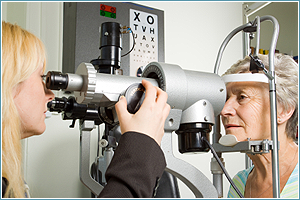Your Health :: Vision
Studies show that 85-90% of all sensing clues in driving come through the eyes. While aging takes its toll on eyesight, seniors can learn to cope with changing vision to keep everyone safer on the road. Seniors with diminished eyesight may face a decline in the ability to:
- Judge the speed of oncoming vehicles
- Notice objects at the outer edges of your field of view
- Shift focus to objects and identify them
- Perceive detail and differences in color and contrast
- Accurately judge the distance of an object
- Detect motor vehicles, cyclists, and approaching pedestrians
- Recognize objects in low-light conditions such as dawn, dusk, rain, fog, haze and snow
- See signs at the roadside because of narrows side vision

At the same time, seniors become more sensitive to glare as they age. Their eyes' lenses can become thicker and yellowed, resulting in a fogging vision and sensitivity to glare. A 55-year-old takes eight times as long to recover from glare as a 16-year-old.
Colors also become harder to see with age. Red colors do not appear as bright and it may take some senior drivers twice as long as it took in earlier years to detect the flash of brake lights.
While you can't turn back the clock, you can get frequent eye exams, wear corrective lenses, and select vehicles with the best visibility (See "Your Vehicle" pages).









